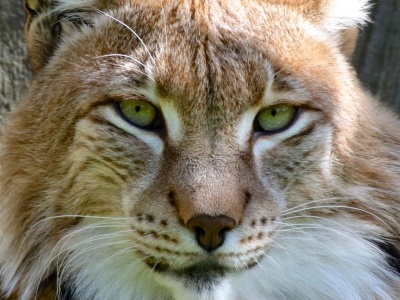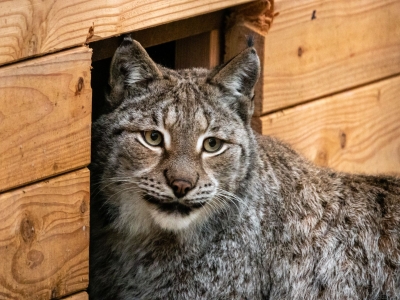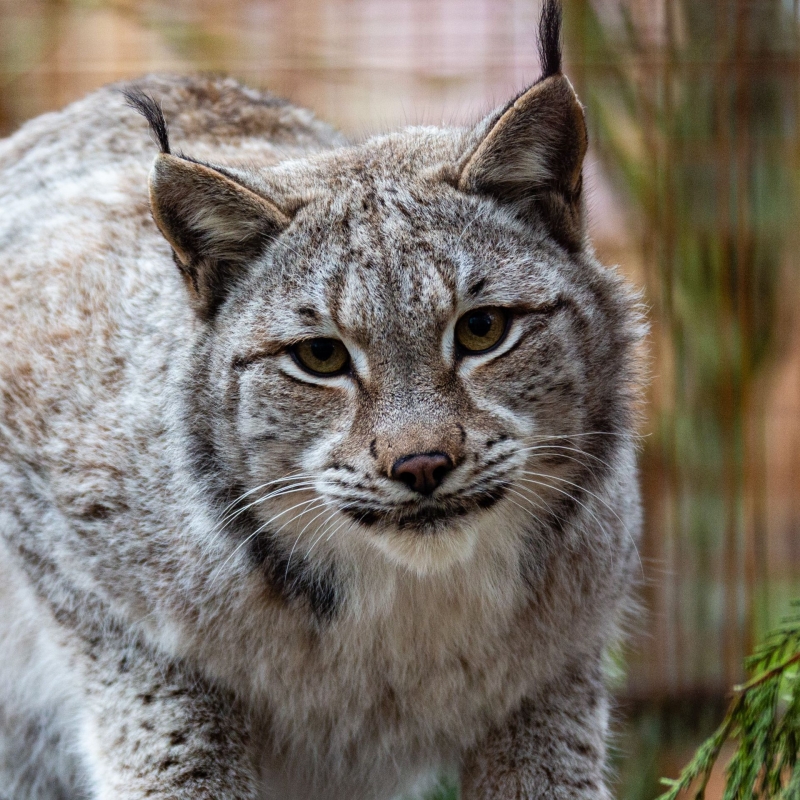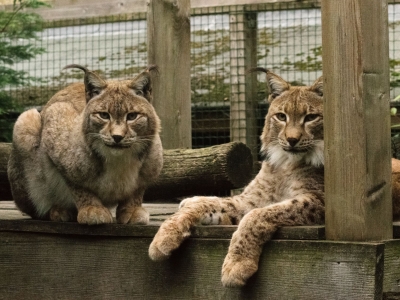Eurasian lynx Lynx lynx
Animals in our sanctuary
Jim (Male)

Jim and Monte are from a German zoo closed because of bankruptcy.
Azura (female)

Azura was seized together with four other lynxes by the authorities from a man in Lithuania.
A seizure only happens in case of serious animal abuse (neglect, too small enclosure, illegal keeping of an animal, no official papers, ...).
Ezra (Male)
.jpg)
Ezra was seized together with four other lynxes by the authorities from a man in Lithuania.
A seizure only happens in case of serious animal abuse (neglect, too small enclosure, illegal keeping of an animal, no official papers, ...).
Ozark (Male)

Ozark was seized together with four other lynxes by the authorities from a man in Lithuania.
A seizure only happens in case of serious animal abuse (neglect, too small enclosure, illegal keeping of an animal, no official papers, ...).
Zyra (female)

Zyra was seized together with four other lynxes by the authorities from a man in Lithuania.
A seizure only happens in case of serious animal abuse (neglect, too small enclosure, illegal keeping of an animal, no official papers, ...).
Korra (female)

Korra was seized together with four other lynxes by the authorities from a man in Lithuania.
A seizure only happens in case of serious animal abuse (neglect, too small enclosure, illegal keeping of an animal, no official papers, ...).
Appearance:
The Eurasian lynx is a medium-sized wild cat, recognizable by its black ear tufts, full cheek ruffs, and short tail (10-25 cm long) with a black tip. It has large, furry paws that help it walk through the snow. In winter, its coat becomes thicker and lighter in color, with scattered spots across its body.
Behavior:
This solitary hunter lives in vast territories, with males covering larger areas than females. Lynxes are mainly active at dusk and hunt by ambushing rabbits, deer, and other small animals.
Diet:
Lynxes primarily hunt rabbits, deer, birds, and rodents. They consume about 1 kg of food per day and can feed on a large prey animal for several days. They stalk their prey and attack from ambush. Large prey, such as roe deer, can provide food for multiple days.
Habitat and Distribution:
The Eurasian lynx inhabits dense forests and mountainous regions of Western Europe, Russia, and Central Asia, at elevations up to 2,000 meters, and in some regions up to 4,000 meters. Once widespread, the species is now limited to isolated areas, and its conservation status varies by region.
Reproduction:
Mating occurs between February and April, followed by a gestation period of 67-74 days. Typically, 2 to 4 kittens are born, staying with their mother for about 10 months before leaving the den.
Conservation Status and Threats:
Although the Eurasian lynx was eradicated from many parts of Europe, successful reintroduction programs in countries such as Germany and Switzerland have helped restore populations. However, the species remains threatened by habitat loss and fragmentation, a decline in prey due to hunting, and poaching. While commercial hunting is banned in most countries, it is still permitted in some parts of Russia.
Interesting Facts:
- The ear tufts of the lynx are believed to help detect faint sounds.
- Lynxes are well adapted to cold climates thanks to their thick fur and furry paws.
Sources
National Geographic – Eurasian lynx profile & habitat
https://www.nationalgeographic.com/animals/mammals/facts/eurasian-lynx
WWF (World Wildlife Fund) – Lynx facts
https://www.worldwildlife.org/species/eurasian-lynx
Animal Diversity Web – Lynx lynx species overview
https://animaldiversity.org/accounts/Lynx_lynx/






.jpg)